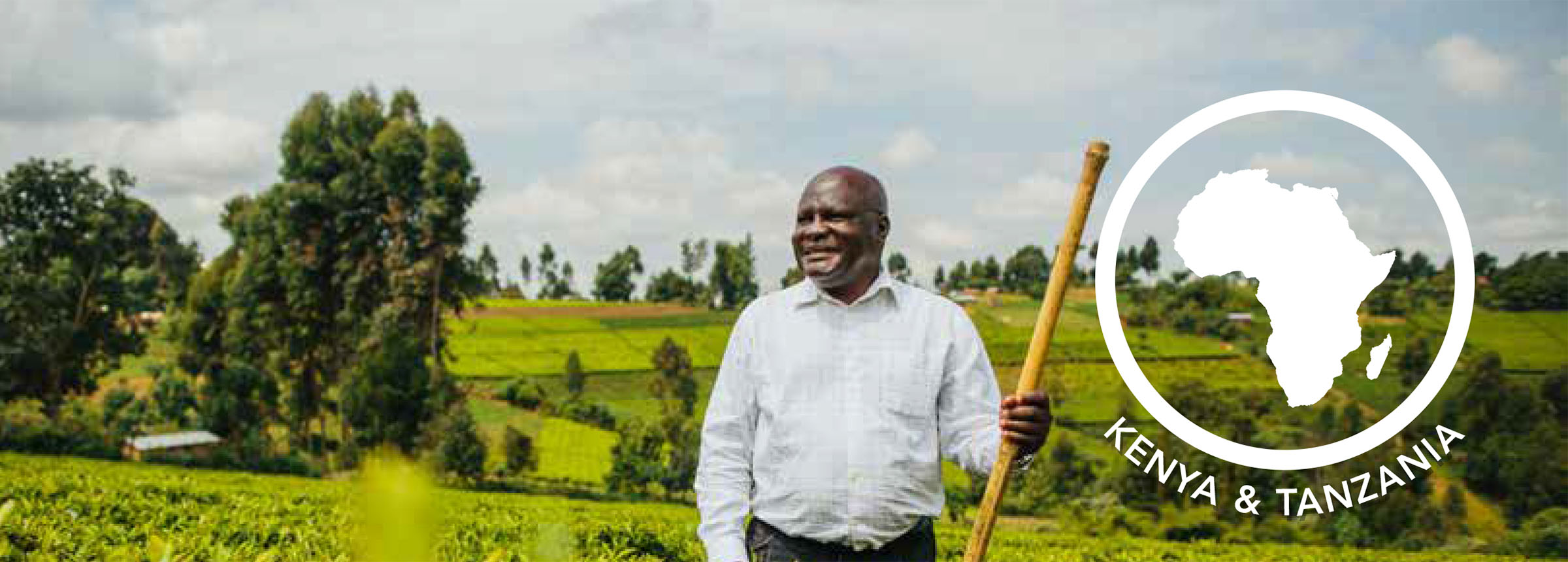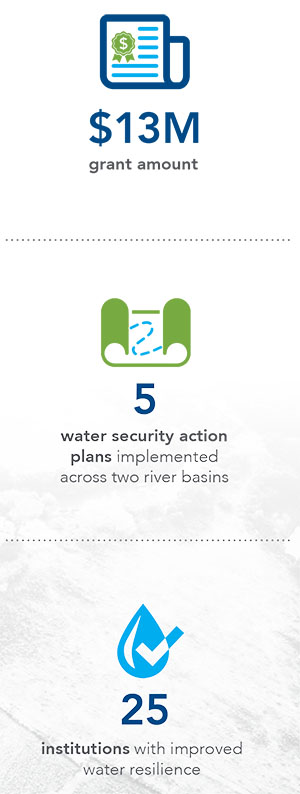
‘The River Belongs to the People’
 PROJECT NAME: The Sustainable Water Partnership (SWP)
PROJECT NAME: The Sustainable Water Partnership (SWP)
SYNOPSIS: SWP supports the U.S. Agency for International Development’s (USAID) thought leadership, innovation and action in global water security by integrating water security issues into USAID
programming.
YEARS ACTIVE: 2016–2021
FUNDER: USAID
Gordon Mumbo was born in southern Kenya, not far from the Mara River, a world-famous ecosystem which eventually winds south through Tanzania. The Mara River Basin is crucial for food production, economic security and tourism for both countries, yet today it is at risk of running dry. Destruction of the Mau Forest, which stores much of the river basin’s water, depletes the region’s supply. Population growth leads to increased demand for food, which leads to land-use change.
“People around the Mara on the Kenya side were typically pastoralists, but this is changing,” says Mumbo, a team leader for the Sustainable Water Partnership (SWP), USAID’s flagship water program, implemented by Winrock International. “They are getting more into agriculture.” Against this backdrop SWP launched the Sustainable Water for the Mara effort, a three-year project in the Mara Basin. “This activity is really coming at the right time to address these issues, before they get out of control,” says Mumbo, a water engineer by trade.
Kenya and Tanzania signed a historic Memorandum of Understanding (MoU) in 2015 to cooperate on the basin’s management. This step is not only groundbreaking but rare, as Mumbo well knows. Before coming to SWP, he worked with the United Nations in the Nile River Basin, attempting with mixed results to forge a cooperative agreement between nine countries. But in Kenya and Tanzania, the spirit of collaboration is palpable. Mumbo and his team are cultivating a sense of ownership in the people of the Mara, from community members to government officials to private sector representatives.
“I think the work we are going to do in the Mara could be a model that could be copied in many basins,” Mumbo says. “And really the model will be the community—the stakeholders—being in the driving seats in managing the resource.”
By working with grassroots populations, the SWP team is learning what the community sees as the Mara’s greatest barriers to water security. This knowledge-sharing flows in two directions: SWP educates communities on water risk and conservation, while the communities provide invaluable local perspective.
“The river belongs to the people who live along it,” Mumbo says. “They understand the river better than anybody else. They will be able to own it and work with you at sustaining it. If you want to manage the river, you must involve the people.”
